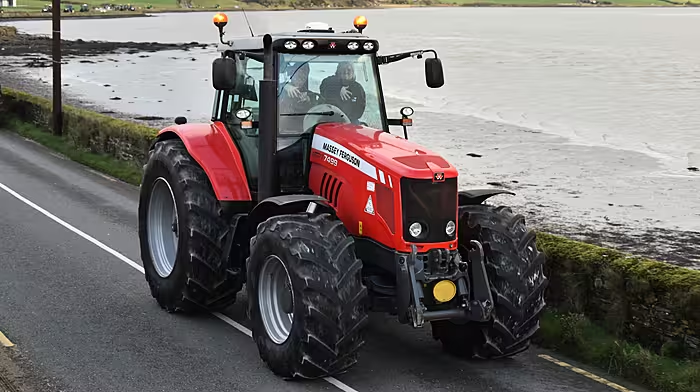Meteorologist Vincent O’Shea says that given the essential nature of food production, Ireland should be treated as a special case when it comes to reducing emissions
THE recent government Climate Action Plan as supported by the EU strongly recommends a 30% methane emissions reduction in Irish agriculture by 2030, and for it to be net zero by 2050.
But, given the essential nature of food production, Ireland should be treated as a special case. Our agriculture sector is and will continue to be clean, viable and sustainable.
In relation to greenhouse gas (GHG) emissions, Ireland is perceived a laggard within the EU due to its large per capita carbon footprint. This notion is unreasonable and quite unfair when we consider the overarching composition of Ireland’s emissions. This was a perception that the Irish climate delegation tried to dispel at the recent Cop27 (the 2022 United Nations Climate Change Conference held in Egypt).
Ireland’s total GHG emissions are presently around 62m tonnes of carbon dioxide equivalent (Mt CO2eq), which is circa 12 tonnes per person annually, making us appear non-compliant to the EU.
Our developed knowledge economy is strongly based around hi-tech industries and businesses, typically led by the pharmaceutical and IT sectors. Our agriculture and food (especially dairy) sectors occupy a large portion of the economy with its high quality export market.
Clearly, rearing cattle and other grazing animals contribute significantly to methane and nitrous oxide emissions which together have 80 times the warming power of, but a shorter stay in the earth’s atmosphere than, carbon dioxide.
One must make comparisons with heavy industry economies like those of the US, China and western Europe, whose large polluting is done mainly by steel, cement and plastics manufacture.
The scientific community widely agrees these industries have the largest impact on global climate change.
Ireland is unusual, compared to other EU countries, because greenhouse gas emissions from agriculture make up such a large share of our emissions. In 2022, agriculture was responsible for 37% of that total.
The most intense dairying is concentrated in the south of this country – especially in Munster and south Leinster. Cork has, by far, the largest total of cows of any county (370,000), with an estimated 160,000 of those in the Cork South West constituency.
Since the abolition of quotas in 2015 the dairying sector has undergone a boom – a rapid expansion that places it amongst the top industries in the country. The dairy industry has grown from the basic assortment of milk and cheeses to expansive specialised nutrition product lines that include infant formulas, weight-loss food products, and sports foods.
Teagasc reports that in 2022, Irish farmers produced nearly nine billion litres of milk, an increase of over two billion litres since 2015. Exports reached €5.2bn, making it the largest food and drink export category. We produce enough milk and dairy products to feed 52m people worldwide each year, making this industry in the interest of the ‘common good’.
The farming community is very aware of actions that will help reduce emissions such as improving animal digestion, manure application, fertiliser use, grass utilisation and many others, including renewable energy installations.
However, the emissions accounting process arguably has flaws. In addition to the commonly-reported production-based (territorial) emissions, statisticians from our environmental protection agency (EPA) also calculate ‘consumption-based’ emissions. These emissions are adjusted for trade.
To calculate consumption-based emissions we need to track which goods are traded across the world and must remember there are added emissions involved in shipping and other transport.
Whenever an item is imported we need to include all the CO2 emissions that were emitted in the production of that item, and vice versa – subtract all CO2 emissions that were emitted in the production of goods that were exported. This is what occurs when we export (offshore) the dairy items to other countries. They are the ones who consume and benefit from our green efforts.
All countries will have emissions from farming, though not as big a ratio overall as ours. Remember that carbon capture techniques can be employed where heavy industries prevail, but that’s not possible over the green pastures of Éire. I believe it unreasonable and overly challenging for Ireland to meet the stringent methane emission targets set for 2030. Due to the fact our large food industry is essential to so many worldwide, we should be treated as a special case.










